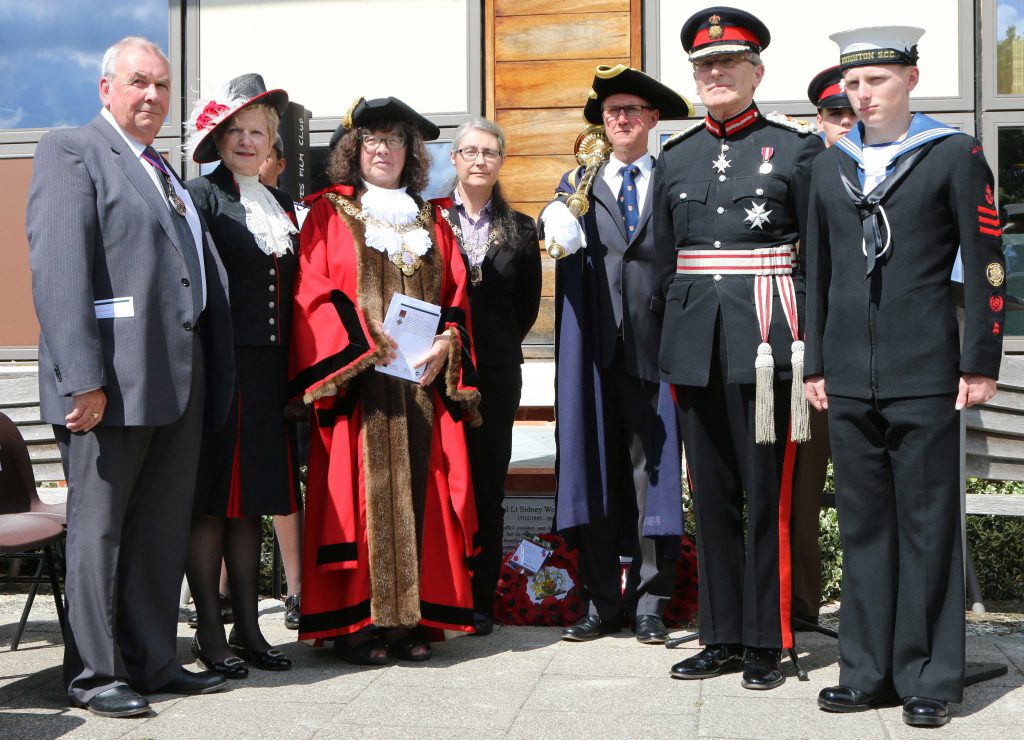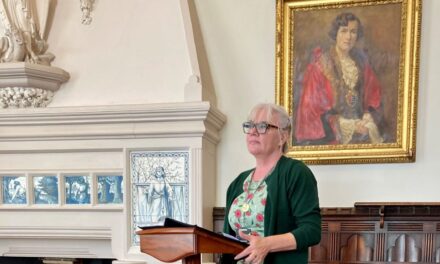A memorial has been unveiled to commemorate the life of a First World War hero from East Sussex – 100 years to the day since his death.
Sidney Woodroffe, from Lewes, was awarded the Victoria Cross for his bravery in battle at the Belgian village of Hooge, near Ypres, where he lost his life at the age of 19 on July 30, 1915.
Woodroffe, a second lieutenant in the 8th Battalion, The Rifle Brigade, was mortally wounded as he led his men in a counter-attack in the face of intense German fire. In a ceremony organised by East Sussex County Council, Lewes District Council and Lewes Town Council, a memorial paving stone and plaque was unveiled outside Lewes Library, in Friars Walk, on Thursday (JUL 30).
Cllr Susan Murray, Mayor of Lewes, said: “Sidney Woodroffe was a true hero, who showed incredible gallantry in leading his men in the face of a terrible onslaught from the enemy.
“This permanent memorial will ensure his name lives on for generations to come, and it’s most fitting that it should be unveiled in his home town on the centenary of his death with representatives from his regiment in attendance.”

Unveiling of the memorial to Sidney Woodroffe VC. From left: Cllr Colin Belsey, chairman of East Sussex County Council, Juliet Smith, High Sheriff of East Sussex, Cllr Susan Murray, Mayor of Lewes, Cllr Ruth O’Keeffe, chairman of Lewes District Council, Lee Symons, Lewes Town mace bearer, Peter Field, Lord Lieutenant of East Sussex, Cadet from Brighton Sea Cadets
Woodroffe was born in Lewes on December 17, 1895, educated at Marlborough College, in Wiltshire, and was due to study classics at Cambridge before war interrupted his plans. After signing up and receiving his commission in December 1914, he was deployed to France, where he was made platoon commander in A Company.
His actions in the battle which claimed his life, saw the first concerted use of flamethrowers by German forces, were described in the London Gazette. It reported: “The enemy having broken through the centre of our front trenches, consequent on the use of burning liquids, [Woodroffe’s] position was heavily attacked with bombs from the flank and subsequently from the rear, but he managed to defend his post until all his bombs were exhausted, and then skilfully withdrew his remaining men.
“This very gallant officer immediately led his party forward in a counter attack under an intense rifle and machine gun fire, and was killed whilst in the act of cutting the wire obstacles in the open.”
Woodroffe’s body was never recovered, but his name is inscribed on the Menin gate, near Ypres. Two of his brothers, Kenneth and Leslie, also served and lost their lives in the war.




